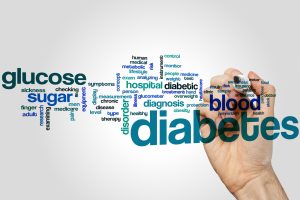 If you have ever had a migraine headache, you know the pain is so intense that a trip to the hospital may be in store. In this case, the ER staff may use an opioid pain medicine as a first resort. However, a recent study has shown that this commonly used drug, also known for its addictive qualities, may not be the best choice for migraine relief.
If you have ever had a migraine headache, you know the pain is so intense that a trip to the hospital may be in store. In this case, the ER staff may use an opioid pain medicine as a first resort. However, a recent study has shown that this commonly used drug, also known for its addictive qualities, may not be the best choice for migraine relief.
What is a migraine?
A migraine headache involves a throbbing pain, usually on one side of the head, usually along with other symptoms. Nausea, vomiting, blurred vision, and sensitivity to light are some of the most common symptoms of such headaches. Pain can occur for hours, or even days, and warning symptoms such as constipation, mood changes, neck stiffness, increased thirst, or frequent yawning may precede a migraine. In rare cases, right before a migraine you may get aura symptoms such as flashes of light or blind spots. In the 24 hours after, you may have symptoms such as confusion, moodiness, dizziness, and weakness.
Aspirin, ibuprofen, acetaminophen, or a combination of acetaminophen, aspirin and caffeine may be used for treatment of most migraines. More severe cases may require medications such as Triptan or Ergot, which help constrict blood vessels and block pain pathways. However, opioids are used if a person cannot tolerate such medicines.
Migraine Relief Research
A recent study in the journal Neurology looked at 127 patients who had at least trips to the New York emergency department for migraine headaches. Half of the patients received the opioid hydromorphone and the other half received an IV of the dopamine-releasing drug prochlorperazine.
After 48 hours of treatment, sixty-percent of people from the prochlorperazine group versus thirty-percent of the hydromorphone group felt relief. In addition, the prochlorperazine group was 30-percent less likely to ask for more pain medicine after treatment than the opioid group (6-percent versus 36-percent). This study suggests that anti-dopaminergic drugs may provide more relief to migraine headache sufferers than opioids. However, you should be sure to talk with your healthcare provider to find the best treatment for you.
Natural Ways to Relieve Migraine Pain
- Learn to cope (LTC) : This treatment gradually exposes patients to headache triggers to help them become desensitized to such triggers.
- Practice consistent overall wellness: Be sure to get a good night’s sleep of at least 6 to 8 hours of sleep each night and eat healthy, balanced meals every day. Also, be sure to find healthy ways to manage stress such as doing yoga, engaging in relaxation breathing, or taking a walk daily.
- Stay active: Regular exercise can help not only manage stress, but can also prevent migraines. Exercise reduces such headaches by reducing tension in the body. Furthermore, staying active can help reduce body weight. Since obesity is thought to be a risk factor for migraine headaches, weight loss could reduce such risk.
- Other medicinal treatments: Cardiovascular or anti-seizure drugs, antidepressants, and Botox may be prescribed to help prevent migraine headaches. However, for the more natural route, reach for Migravent by Vita Sciences. Migravent contains natural ingredients such as PA-free butterbur, CoQ10, magnesium, and riboflavin. This formula has been found to help prevent migraines and support reduced frequency of such headaches and related symptoms.
Disclaimer: Please be sure to talk to your healthcare provider before starting any new medication.
-written by Staci Gulbin, MS, MEd, RD, LDN
Sources:
Mayo Clinic (April 26, 2017) “Migraine”
Medline Plus (October 18, 2017) “Skip Opioid Treatment for Migraine in the ER”
 According to the National Institutes of Health, the average American can live an average of 79 years. However, did you know that a few small lifestyle changes could add years to your life? It was found that for every few pounds you lose you could be adding years to your life.
According to the National Institutes of Health, the average American can live an average of 79 years. However, did you know that a few small lifestyle changes could add years to your life? It was found that for every few pounds you lose you could be adding years to your life. you have high blood pressure, heart disease may be the health concern most on your mind. However, high blood pressure can be a risk factor for more than just heart conditions. A recent study has found that women in their 40’s with high blood pressure have an increased risk of dementia.
you have high blood pressure, heart disease may be the health concern most on your mind. However, high blood pressure can be a risk factor for more than just heart conditions. A recent study has found that women in their 40’s with high blood pressure have an increased risk of dementia. When you hear about brain health, you may think of lowering stress and anxiety. However, having a healthy brain also involves reducing risk of stroke as well as memory conditions like Alzheimer’s and dementia. A recent report has found that keeping your body healthy is vital to keeping your brain healthy.
When you hear about brain health, you may think of lowering stress and anxiety. However, having a healthy brain also involves reducing risk of stroke as well as memory conditions like Alzheimer’s and dementia. A recent report has found that keeping your body healthy is vital to keeping your brain healthy. When you take a medicine over the counter, you likely focus mostly on the benefits it can provide you. However, it’s possible to experience some harmful health effects from use of over-the-counter medicines. A recent study has found that some common painkillers used by those with arthritis may cause high blood pressure.
When you take a medicine over the counter, you likely focus mostly on the benefits it can provide you. However, it’s possible to experience some harmful health effects from use of over-the-counter medicines. A recent study has found that some common painkillers used by those with arthritis may cause high blood pressure. are? If you are a young adult, it is very likely that these questions have not been at the forefront of your mind when it comes to your health. A recent study showed that in 2013-2014, only half of the 6.7 million young adults from 18 to 39 years old were treated for high blood pressure. Meanwhile, only 40-percent got their blood pressure under control. However, blood pressure control is not only important for heart health, but for brain health as well. Recent studies have linked normal blood pressure levels with improved cognition in older adults.
are? If you are a young adult, it is very likely that these questions have not been at the forefront of your mind when it comes to your health. A recent study showed that in 2013-2014, only half of the 6.7 million young adults from 18 to 39 years old were treated for high blood pressure. Meanwhile, only 40-percent got their blood pressure under control. However, blood pressure control is not only important for heart health, but for brain health as well. Recent studies have linked normal blood pressure levels with improved cognition in older adults. recent report by the Centers for Disease Control and Prevention (CDC) says that over 100 million people in the United States have diabetes or prediabetes.
recent report by the Centers for Disease Control and Prevention (CDC) says that over 100 million people in the United States have diabetes or prediabetes.
 healthy fats may work to lower cholesterol as well as statins.
healthy fats may work to lower cholesterol as well as statins. disease risk. These rules include:
disease risk. These rules include: